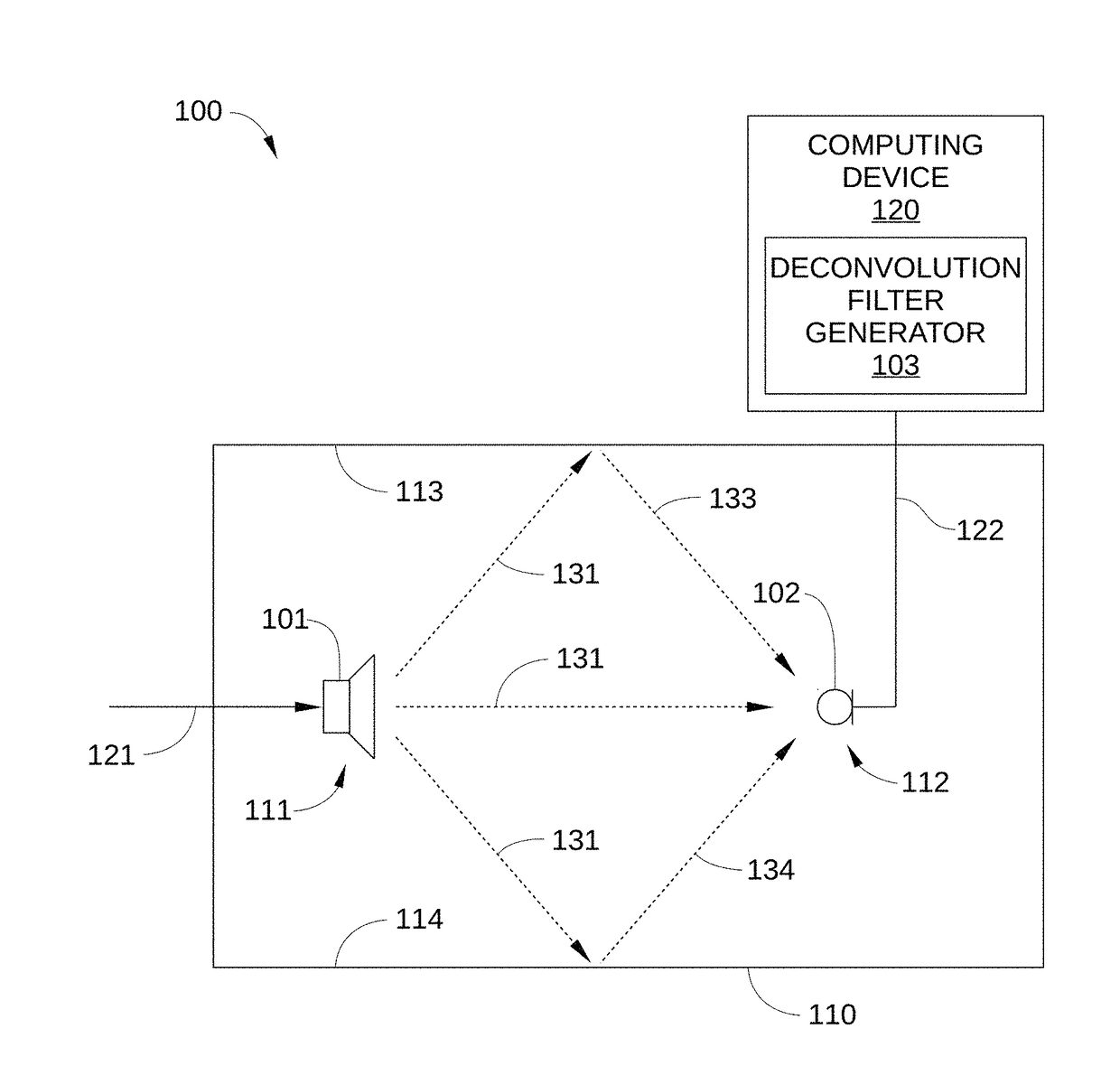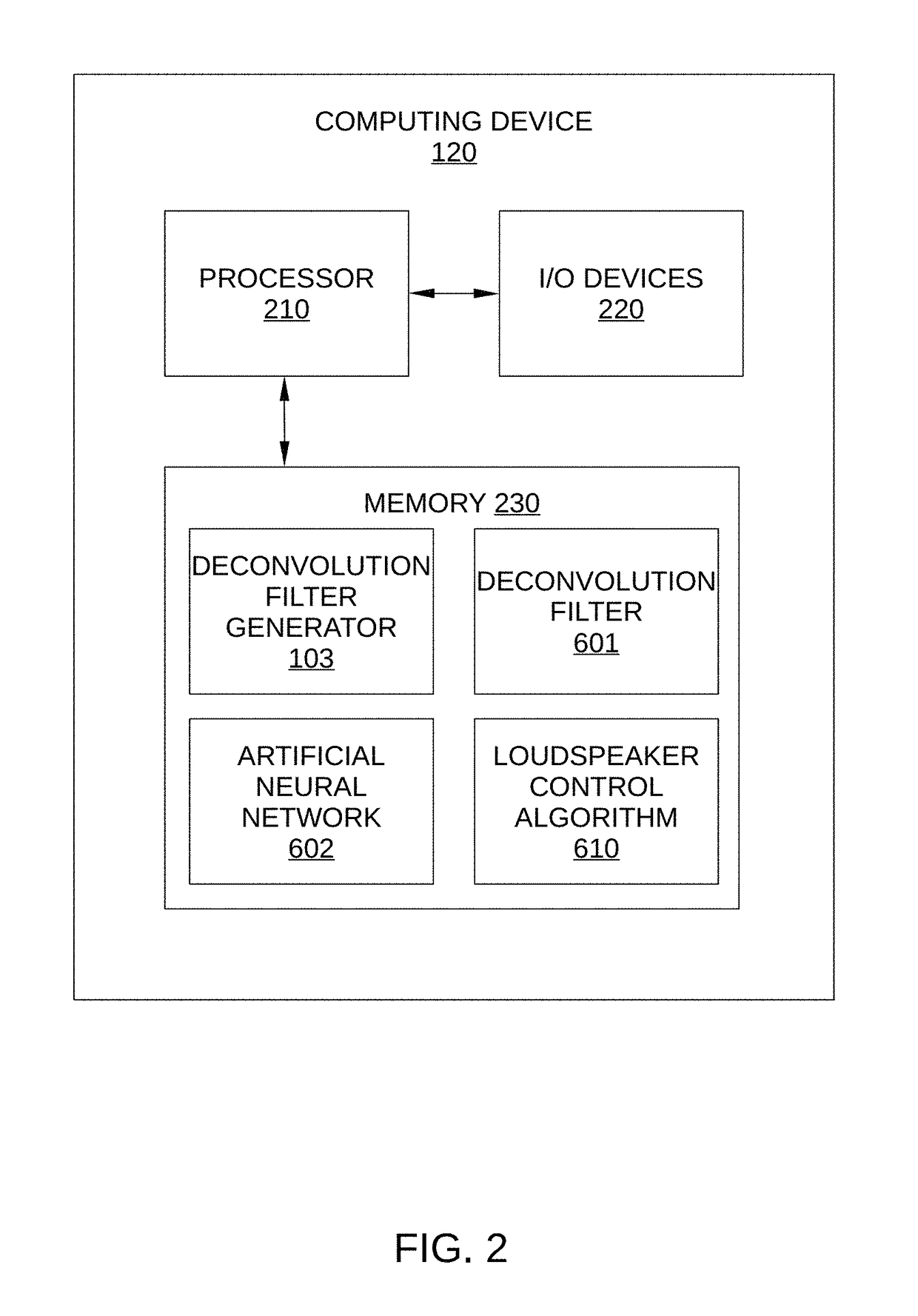Neural network-based loudspeaker modeling with a deconvolution filter
a neural network and loudspeaker technology, applied in adaptive control, process and machine control, instruments, etc., can solve the problems of inability to accurately learn the dynamic behavior of a loudspeaker in such an environment, inability to use such a chamber in a mass production environment, and inability to accurately model the dynamic behavior of a loudspeaker. to achieve the effect of removing distortion in the loudspeaker respons
- Summary
- Abstract
- Description
- Claims
- Application Information
AI Technical Summary
Benefits of technology
Problems solved by technology
Method used
Image
Examples
Embodiment Construction
[0001]The various embodiments relate generally to analyzing loudspeaker systems and, more specifically, to neural network-based loudspeaker modeling with a deconvolution filter.
Description of the Related Art
[0002]Modeling the behavior of loudspeakers is a common step when designing and manufacturing an audio system. For example, a manufacturer may collect data for a loudspeaker once the loudspeaker reaches the end of a factory line in order to model the specific behavior and characteristics of the loudspeaker. The resulting model may then be implemented in a control system that corrects for linear and / or non-linear distortion of the loudspeaker during operation, thereby enabling a desired loudspeaker response to be achieved. Such modeling is sometimes performed with an artificial learning architecture, such as an artificial neural network.
[0003]In machine learning, artificial neural networks include algorithmic models inspired by biological neural networks that are used to estimate ...
PUM
 Login to View More
Login to View More Abstract
Description
Claims
Application Information
 Login to View More
Login to View More - R&D
- Intellectual Property
- Life Sciences
- Materials
- Tech Scout
- Unparalleled Data Quality
- Higher Quality Content
- 60% Fewer Hallucinations
Browse by: Latest US Patents, China's latest patents, Technical Efficacy Thesaurus, Application Domain, Technology Topic, Popular Technical Reports.
© 2025 PatSnap. All rights reserved.Legal|Privacy policy|Modern Slavery Act Transparency Statement|Sitemap|About US| Contact US: help@patsnap.com



